Withlacoochee River System Update - 1/5/2023
Southwest Florida Water Management District sent this bulletin at 01/06/2023 03:47 PM ESTWater Levels Remain High as the New Year Begins
Rainfall:
- 2022 has finally come to an end.
- As far as rainfall goes, it was mostly uneventful in the Withlacoochee River Watershed this past year.
- Our region received 52 inches of rain in 2022, slightly below the historical average of 53.6 inches.
- We also had about 12 inches less rain this year during our wet season (June to September), compared to the very wet summer of 2021.
- As a result, no flooding occurred along the Withlacoochee River or in nearby low-lying lands this year.
- Region-wide aquifer (groundwater) levels are currently in the 58th percentile, still above average, but much lower than they were a year ago (83rd percentile).
- The map below shows 2022 rainfall totals for our entire District.
- The path of Hurricane Ian is clear with the record rainfall that it left behind as it passed through Florida to our south.
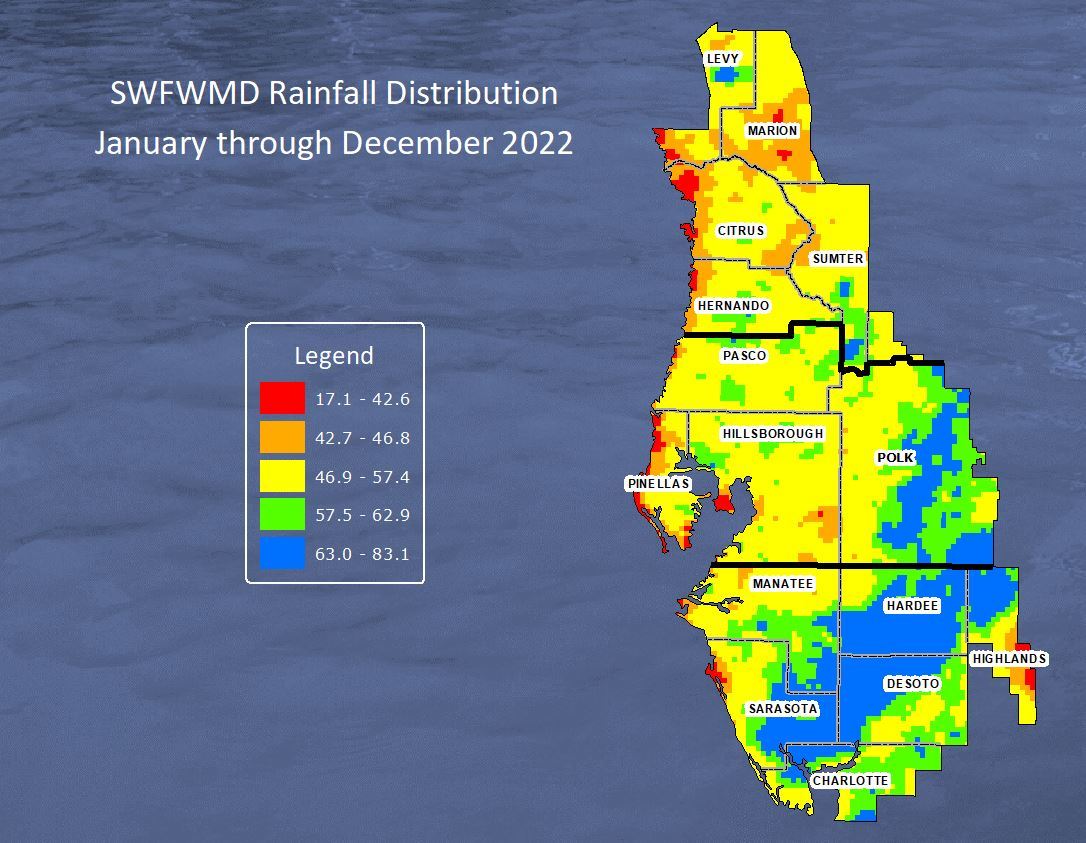
Withlacoochee River (from the Green Swamp downstream past Hwy 200):
- Withlacoochee River levels and flows steadily declined in December, which is normal for this time of year.
- On average, the Withlacoochee River dropped about a foot in December, while flows decreased by about 33%.
- Despite these recent declines, river levels and flows are higher than normal for this time of year, due to our wet season rainfall occurring later in the year this year.
- Higher than normal river levels now, means less of a chance the river will drop significantly this dry season, but that all depends on how much rain we get in the coming months.
- The table below compares current river levels and flows to what they were last month and last year.
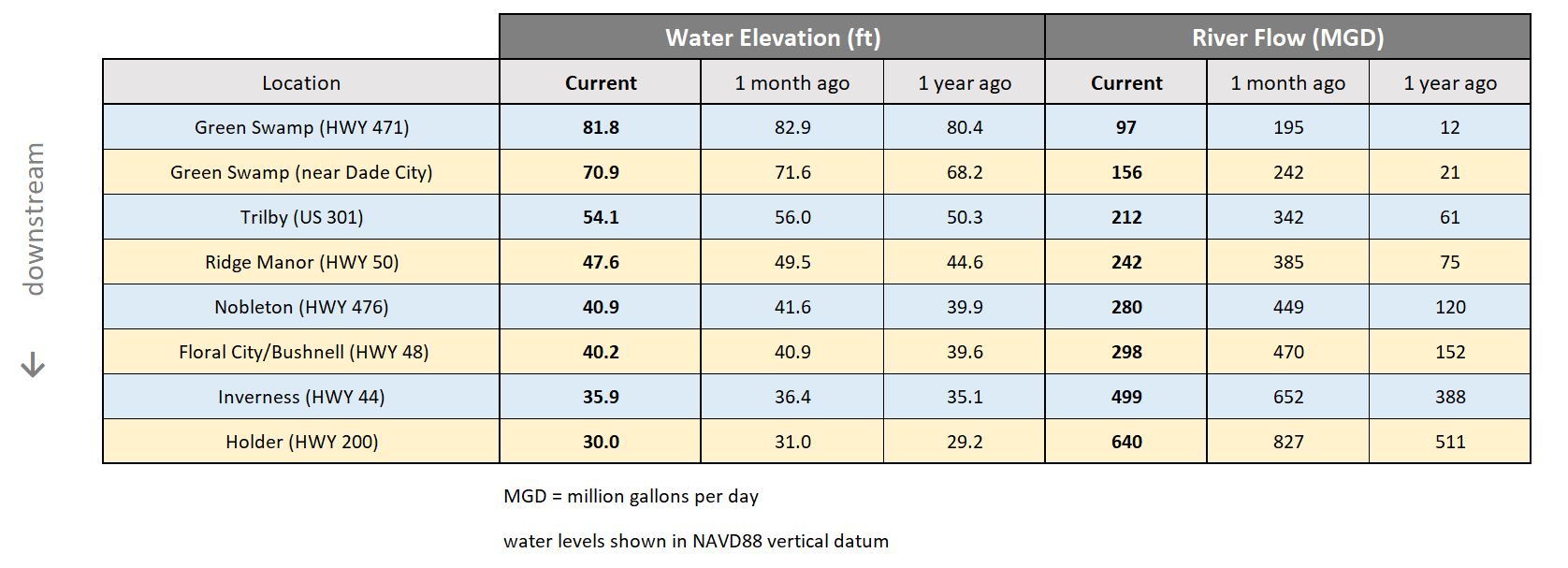
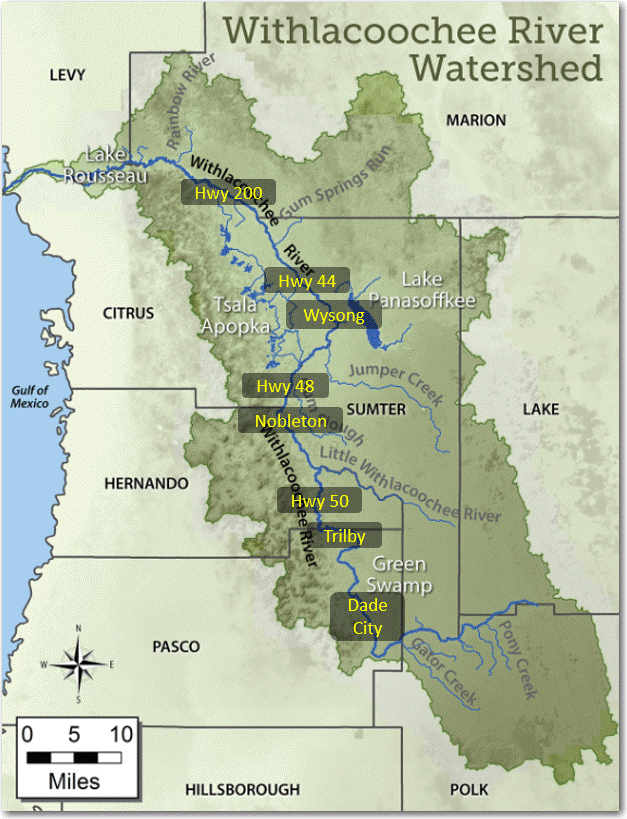
Dense Fog Invades the Withlacoochee River (December 2022)
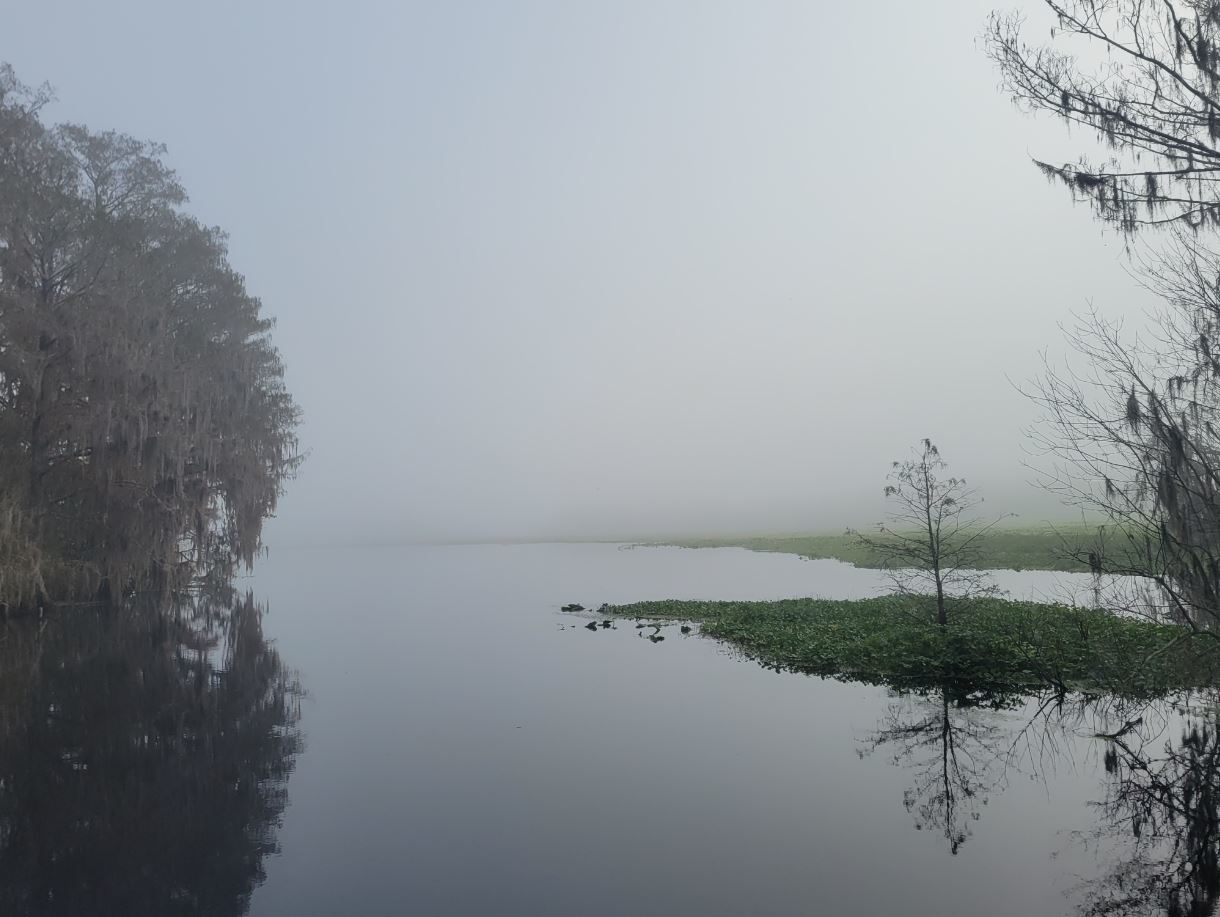
Tsala Apopka Chain of Lakes:
- The Tslala Apopka Lake Chain is a series of 15 named lakes in three distinct pools, connected by canals and separated by water conservation structures (see map below).
- Water levels throughout the lake chain rise and fall several feet each year depending on rainfall and available inflows from the Withlacoochee River.
- Over the past month, lake levels have dropped 2 to 3 inches.
- Water levels decline when outflows are greater than inflows.
- In December, the natural loss of water from evaporation and downward leakage to the aquifer was greater than the amount of rain that fell on the lakes.
- The water control structures, aka “locks”, which were closed in early November, remain closed helping to conserve water in the lake chain.
- The Floral City Pool is currently about an inch higher than it was this time last year.
- The Inverness Pool is three inches lower than a year ago, while the Hernando Pool nearly identical to where it was last January.
- Lake levels will drop much quicker once springtime arrives unless the area receives substantial rainfall.
- The table below shows current water levels, how much they’ve changed in the past month, and how much rainfall each pool received in December.

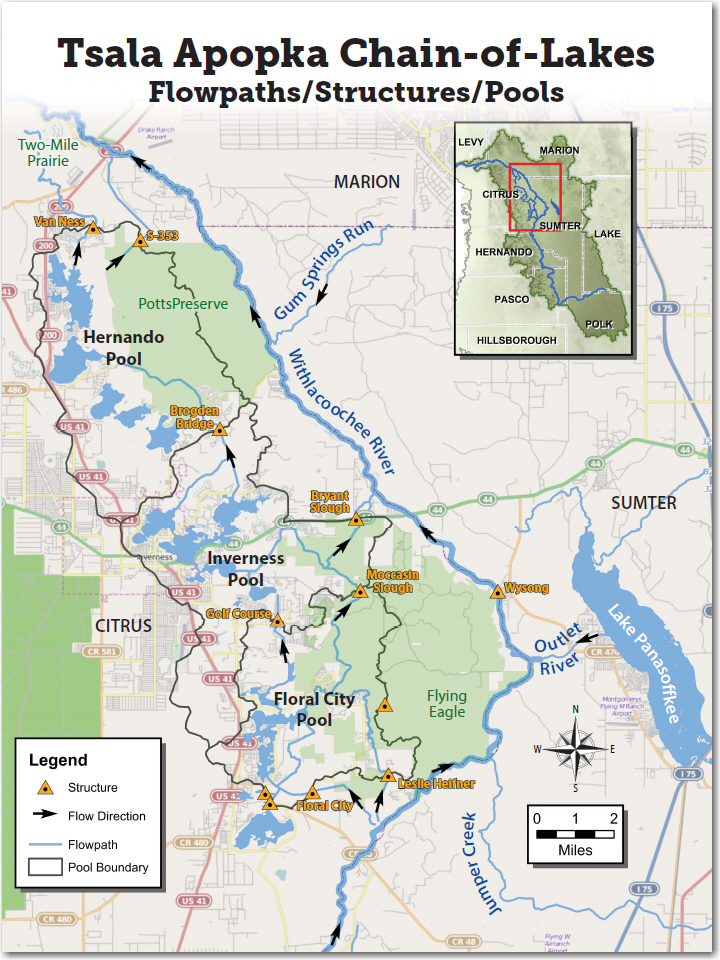
A Hunting Cabin Overlooks the Clear Waters of Gum Spring Run (January 2023)
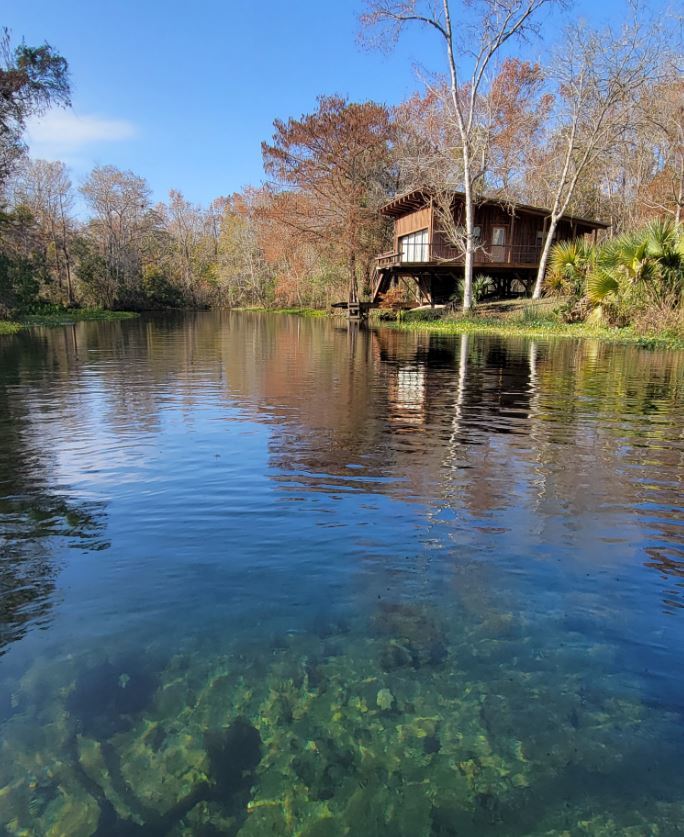
Lake Panasoffkee and Wysong:
- Lake Panasoffkee is a spring-fed lake that receives continuous inflow from Little Jones Creek, Shady Brook, and numerous aquifer connections beneath the lake.
- Water also flows out of the lake year-round, joining the Withlacoochee River upstream of the Wysong water conservation structure.
- Last month, water levels on Lake Panasoffkee fell 4 inches.
- During the dry season (October to May), lake levels typically decline, because of less rainfall and lower aquifer levels.
- Inflows to the lake from Little Jones Creek and Shady Brook decreased by 20% in December.
- Outflows from the lake to the Withlacoochee River declined by 19% over the past month.
- The Wysong structure, which spans the entire Withlacoochee River, remains partially raised helping to maintain river levels immediately upstream.
- Lake Panasoffkee has dropped 18 inches since its peak in early October and is currently the same level it was a year ago.

Lake Rousseau and the Lower Withlacoochee River (from Dunnellon to the Gulf of Mexico):
- Downstream from Dunnellon, the Withlacoochee River is influenced by water control structures on Lake Rousseau.
- Inflow to Lake Rousseau includes combined flows from the Withlacoochee and Rainbow Rivers.
- Withlacoochee River flow (which depends on rainfall and runoff from adjacent lands) is 25% higher than it was a year ago.
- Flow in the Rainbow River (which reflects changes in aquifer levels) is 7% lower than it was a year ago.
- Overall inflows to Lake Rousseau are about 10% higher than they were this time last year.
- The Rainbow River is currently contributing 40% of the total flow entering Lake Rousseau.

- The primary outlet from Lake Rousseau is through the Inglis Bypass Spillway to the Lower Withlacoochee River (see maps below).
- Back in September, this structure reached its capacity and was unable to handle inflows which had increased from summer rains.
- For the past 3 months, the Inglis Main Dam had been open, discharging excess water through the Barge Canal and into the Gulf of Mexico.
- Just yesterday, the Inglis Main Dam was finally closed again.
- The Inglis Bypass Spillway is still flowing near capacity, providing 900 million gallons of freshwater per day to the tidally influenced Lower Withlacoochee River.

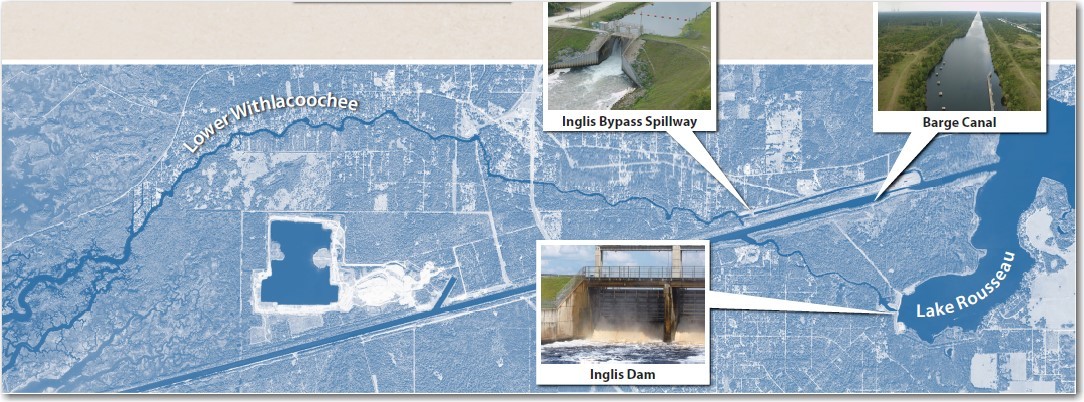
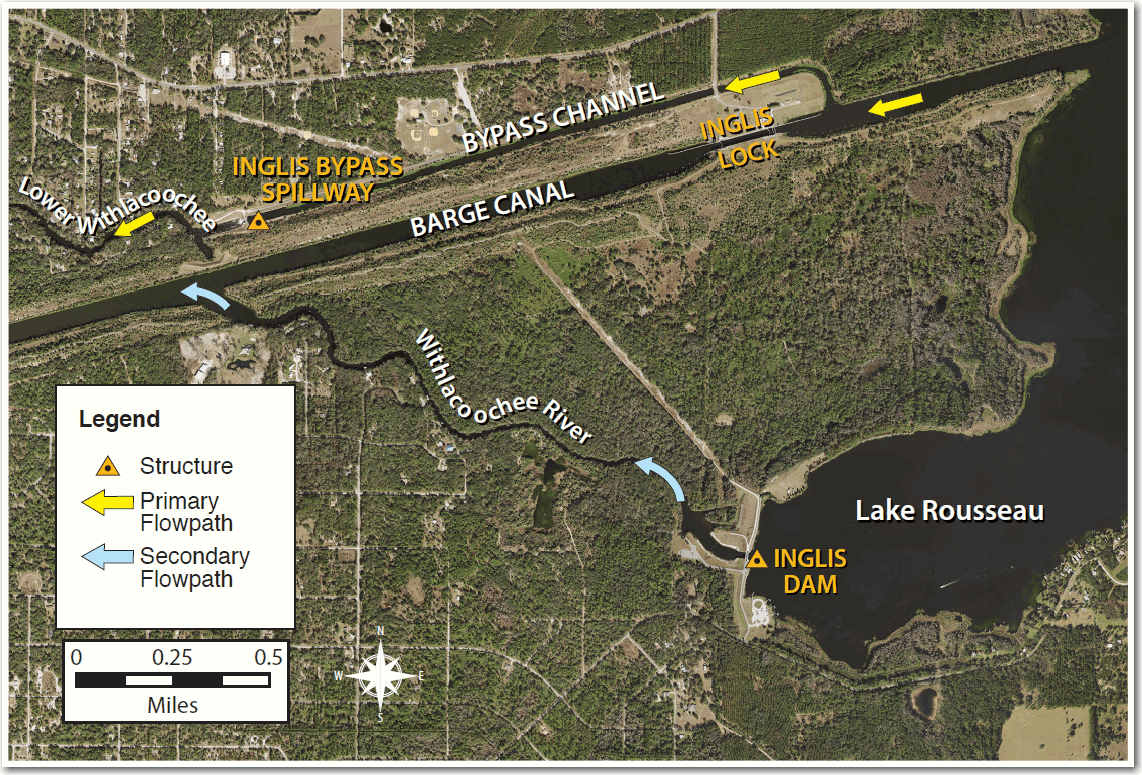
Happy New Year! Can’t wait to see what 2023 has in store.
Mark
Mark Fulkerson, Ph.D., P.E.
Chief Professional Engineer
Water Resources Bureau
Southwest Florida Water Management District
(352) 269-6073 (office)
(352) 279-4493 (cell)

